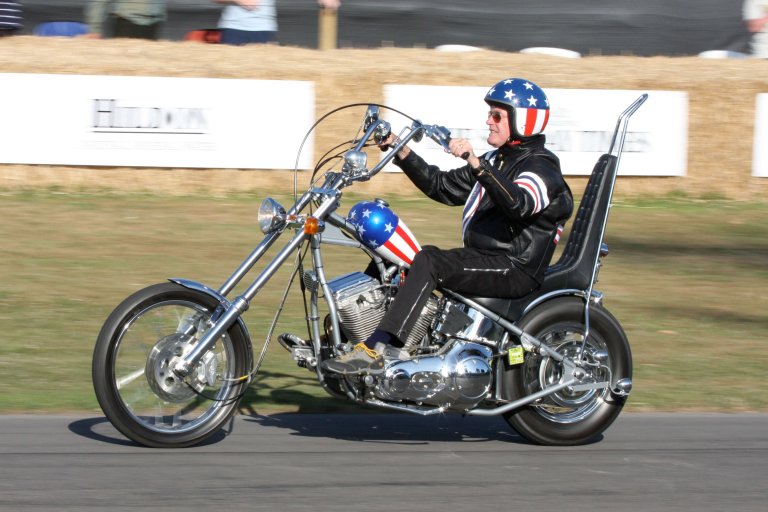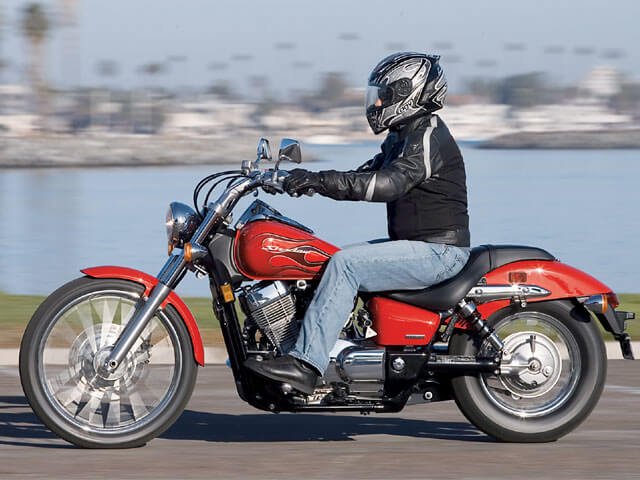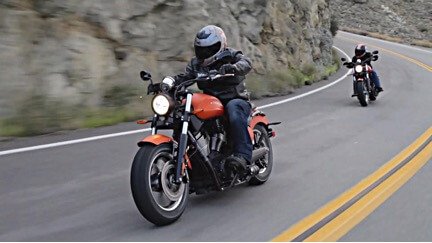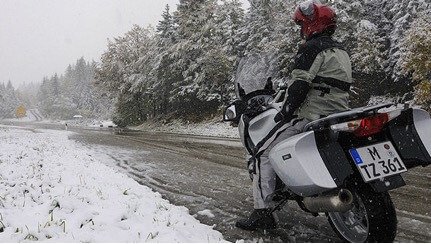
5 TIPS FOR RIDING A MOTORCYCLE IN THE WINTER

Winter isn't over yet. Riding your motorcycle in the winter can be difficult at times, but taking these precautions can help you enjoy your bike safely year-round!

Stay warm by layering your gear
Start with base layers that cover your entire body – including full legs and arms. You can find great options made by companies like Under Armor and many motorcycle apparel companies. The idea is to find base layers that will wick away any sweat, keeping you warm and dry while you ride. You’ll want some sweat-wicking socks too, since feet are prone to getting cold. Over your base layers wear an insulation layer provided by fleece or wool. Keep an extra insulation layer with you in case temperatures plunge even lower. Your outer layer should be waterproof but breathable, such gear made by Gore-Tex. Make sure you have sturdy boots with good grips. Finally, don’t forget thick windproof gloves, a scarf or neckwarmer, and a tightly sealed helmet with a fog-free face-shield. Layer up and you’re ready to go!

Be on the alert for hazardous road condition
During the winter plows end up breaking up the asphalt and creating more cracks, potholes, and otherwise uneven roads. Drive especially carefully and avoid roads that look torn up. This is particularly true in the winter because reduced traction due to ice, salt, and snow make it more dangerous to swerve in order to avoid a pothole or road obstruction.
Black ice is a well-known winter driving hazard, and is a particular concern when riding a motorcycle. Don’t turn corners quickly, and keep your speed down in general. Assume that you will encounter black ice whenever you ride in the winter, and pay extra attention to slick-looking parts of the road. Salt helps to melt ice, but can also reduce traction for motorcycles as well.

Give yourself time to react on the road
In the winter road conditions may make it harder to stop on a dime if the vehicle ahead of you brakes suddenly. Leave 3-4 car lengths between yourself and the vehicle in front of you so that you can react in enough time to avoid a collision, even in less than favorable weather conditions. You should also stay aware of what is going on a ways ahead of you as well, so that you can more easily anticipate any adversities – such as a car swerving on an icy highway.

Be prepared in case of an accident
Motorcycle accidents can occur more often in cold-weather riding due to reduced traction and while you can avoid many hazards by driving safely, it’s best to be prepared just in case. Membership in a roadside assistance club, such as the American Motorcyclist Association, can be invaluable in the event of an accident or if your motorcycle breaks down. Make sure you have the number saved for a motorcycle-specific towing service too, since they will be best-prepared to treat your bike right.

Ride smart- stay out of bad weather
The best way to avoid a cold-weather motorcycle accident is to be smart about when you decide to ride. Check the weather and plan accordingly. If you get caught in some unexpected back weather – get off the road and wait it out.

9GAG/Jalperdole1
